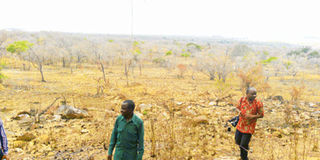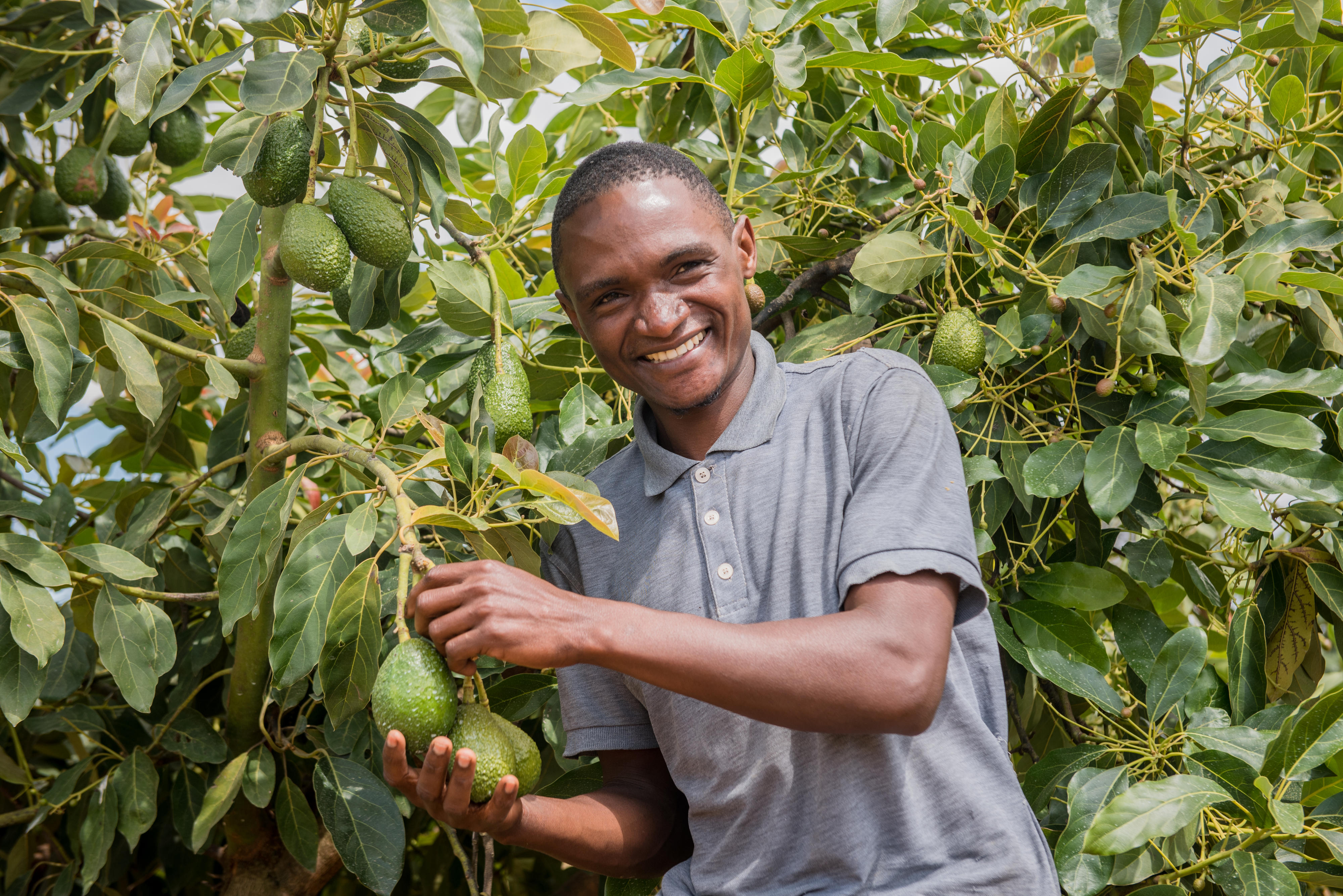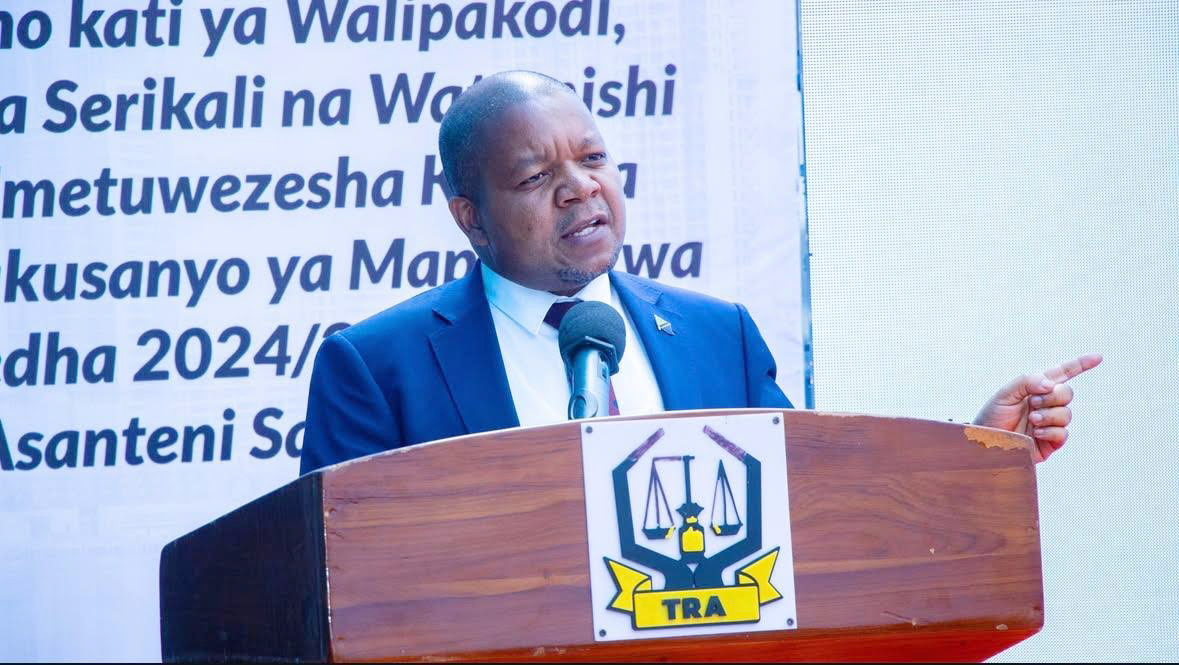Search for economic benefits threatens Selous Game Reserve

Part of the Rufiji Valley at Stiegler’s Gorge where hydroelectric power dam will be built. More than 2,000 plant species will be destroyed. PHOTO | PETER NYANJE
What you need to know:
They were lucky that though it was during the dry season, the Rufiji River had enough water for the boat sail. They therefore fulfilled their dream.
Dar es Salaam. Kelvin (not his real name), his wife and their 12-year-old daughter travelled from Germany to Selous Game Reserve with one major mission – to see a sunset while cruising along Rufiji River. Only hours after arriving at Mivumo Serena Mountain Lodge, they set off in a boat ride.
They were lucky that though it was during the dry season, the Rufiji River had enough water for the boat sail. They therefore fulfilled their dream.
Zakayo Nyalusi, a seasoned boatman at Mivumo Serena Lodge, says Kelvin and his family were lucky to have made the trip this year.
“I am worried if other tourists will be lucky like Kelvin if the government goes ahead with its plans of implementing the Stiegler’s Gorge power project,” he told The Citizen at the lodge after returning from the sunset view trip.
Mr Nyalusi says the project will definitely affect the water flow and change the entire Rufiji basin ecosystem, making it impossible to undertake some of the missions which are currently possible.
“We are not sure if there will be enough water to allow boat ride along the river when the dam is built.”
Since the River Rufiji is the lifeline to Selous Game Reserve, the Stiegler’s Gorge project will most likely affect the largest reserve in East and Central Africa. Due to its uniqueness, Unesco put Selous on the World Heritage Sites (WHS) list in 1982, but due to the lack of proper conservation the reserve is on the list of endangered sites.
Because the Stiegler project is one of issues which Unesco listed among factors which endangers the Reserve, going on with the project would easy Unesco’s decision to delist Selous from the World Heritage Sites (WHS).
Lucrative project?
The government has been saying that the Stiegler’s Gorge power project is important in increasing Tanzania’s electricity supply. It is projected to produce 2,100MW, ending chronic power problems. Going by 2014 calculations, this is more than double of 1,014MW which the country was producing then.
Nevertheless, the project has remained on cards for so long due to the funding unavailability. To roll out the project which is located in Rufiji Basin Development Authority in Coast Region, the country should raise $2 billion (more than Sh4.2 trillion). This is beyond the reach of the government as private investors have been hard to come by.
But on its downside, the project has major adverse effects and a number of experts have warned the government from undertaking it. Fears that shelving the project will make Tanzania’s goal of having ample electricity supply elusive have been brushed aside because the country has discovered abundant natural gas reserves.
“Therefore, because there are other means of getting electricity, it’s time the government looked at the other side of the Stiegler’s Gorge project. It needs to critically look at the environmental impact of implementing the project,” says veteran journalist Attilio Tagalile.
According to select environmental impacts of the proposed Stiegler’s Gorge project paper written by Prof Raphael Mwalyosi, though the establishment of the hydropower project would enable a large amount of highly valued energy to be produced, ecosystem and environment within and around the Rufiji River basin would be negatively influenced by a variety of reservoir operation options that would be related mainly to irrigated agriculture, fisheries and water quality.
The Stiegler’s Gorge project impact area contains a major wildlife resource in terms of size, density, and diversity.
“No complete populations of wildlife would be in danger from direct ecological consequences of river impoundment and dam construction. However, significant proportions of the populations in the Stigo Project impact area of three species (giraffe, wildebeest, and zebra) would be potentially at risk, owing to their need for habitats of restricted range,” reads part of the report.
On the other hand, numbers of some species, including crocodile and hippopotamus, would increase following the creation of the reservoir and improvement of their habitat downstream of the dam (due to swamp drainage).
This is not something to be happy with as it will create unbalance in the eco system.
According to Prof Mwalyosi, though the ecological impacts of dam construction are relatively minor, the socioeconomic impacts on wildlife and conservation values are potentially great - resulting, for instance, in increased conflicts between wild animals and mankind as many people will have access to the heart of the game reserve.
“These circumstances would reduce wilderness values and disturb animal wildlife, so that, especially, commercially valuable species may be expected to decline unless strict regulations are made and enforced,” he says in the report.
In addition to worries expressed by Mr Nyalusi over Rufiji River flow, Prof Mwalyosi notes in his research that river impoundment would have very negative impacts on floodplain fisheries and agriculture, the latter of which would probably be changed to irrigated agriculture with artificial fertilisation, while floodplain fisheries would totally collapse.
The dam effects would also spread downstream where some mangrove stands in the Delta would probably be displaced by reeds. Delta fisheries would be very negatively affected, because of changes in the water regime as well as in salinity levels.
Water quality
Water quality in the planned reservoir and in the downstream area would be negatively affected by the project, according to Prof Mwalyosi.
The water would often be unfit for human and animal consumption and use, as well as unfavourable for fisheries. The project would also have negative effects on the health of the riparian population, owing to increased potentials for disease vectors.
“Overall, a high degree of uncertainty is involved in the project. The effect of the primary project (hydropower) would be negative owing to its drastic consequences for the immediate and more distant impact areas,” Prof Mwalyosi sums up his environmental impact assessment report on Stiegler’s Gorge hydropower project.
Stigler, as it is, is one of tourism attractions within Selous. Changing it means lost one of important attractions, which would make Selous less attractive.
It seems that the effects of the project seem to prepare a protracted battleground. With the tourism sector fears, environmentalists also have their own concerns on biodiversity and species displacement whiles the proponents of the mega project.
The dam is planned to consume more than 1,100 hectares. Mr Tagalile warns that this area contains more than 2,000 species of flora and fauna which will be lost if the project is implemented.
“It is amazing that while other people elsewhere in the world are busy protecting their plants, we are planning to kill them,” he says.
World heritage site
The development project within Selous endangers the status of the largest reserve as a world heritage Site. Unesco has already put Selous on the list of endangered WHS. This means that if the government does not improve some things, it is just a matter of time before Selous is eliminated from WHS list. This will have disastrous effects.
Among other factors, Unesco has noted uranium mining at the Mkuju River project within the reserve, Stiegler Gorge hydroelectricity project and plans to construct a water dam at Kidunda, as among activities which do not comply with the Selous Game Reserve status as WHS.
On uranium mining, Unesco notes in its recent report that of concern is the lack of clarity in terms of the extraction method, water monitoring and disaster preparedness.
The committee has requested the government submit, by February 1, 2017, an updated report on the state of conservation of the property and improvements on recommendations made earlier, for examination by the World Heritage Committee at its 41st session in 2017.
Pending the tabling of the report, the committee has decided to leave Selous Game Reserve on the WHS list.
No problem
But Tanzania Wildlife Authority (Tawa) director general Martin Loibooki sees no problem with all such projects in Selous, insisting that all the activities are carried out in accordance with the laws.
He says, for instance, that according to Wildlife Conservation Act No: 5 of 2009, exploration and exploitation of uranium and hydrocarbons in game reserves, including the Selous Game Reserve, are permitted.
Mr Loibooki notes that such activities are not permitted until environmental impact assessment has been conducted and the report shows that there would be no effect if such activities are carried out.
“This is in accordance with Environment Management Act,” he says noting that prior to such undertakings, those who are running the project should also make sure that they have paid all relevant costs and fees.
The exploration and exploitation of uranium and hydrocarbons and other similar development undertakings conducted in the game reserve are subjected to environmental and social impact assessment.
He stressed that they were determined to cooperate with their conservation partners to adhere to the Wildlife Conservation Act No. 5 of 2009, the Unesco World Heritage Site Convention and other pieces of legislation pertinent to conservation and sustainable wildlife utilisation to ensure that conservation interests in the Selous Game Reserve as a WHS are not compromised.
“In future it is our plan to undertake strategic environmental assessment for the Selous Game Reserve to comprehensively identify the cumulative impacts of the various existing and proposed developments both within and outside the reserve,” he said.
But, according to Unesco WHS Committee, such studies have not firmly confirmed that there would be no impact on Selous ecosystem if such projects are developed. In fact, in its recent report, Unesco has asked the government to conduct the assessment before sanctioning any project with the reserve area.
“Despite a high likelihood of serious and irreversible damage to the Outstanding Universal Value of the property, the lack of submission of a complete environmental and social impact assessment on the Kidunda dam project, which seems to have been extended in its scope and therefore could have a higher impact on the integrity of the property,” Unesco notes in its report.
This situation has worried a number of stakeholders, including World wildlife Fund (WWF) Tanzania office, which spends a colossal amount of money each year to ensure that Selous, among other conservation areas, remains safe from destruction.
However, WWF country director Amani Ngusaru points out that they were elated by the government gesture which generally indicates that it was ready to ensure that Selous game Reserve value is not compromised by industrial developments.
“This is a promising development because the future of Rufiji, Ruaha and Kilombero valleys are in jeopardy and if we don’t do something now we are heading for disaster,” he warns.
Prof Ngusaru said combined, these valleys forms the backbone of the national ecosystem in the southern part.
“We cannot afford to allow this area to be decimated. It is not about the wildlife, it is about our future.”
To be continued




